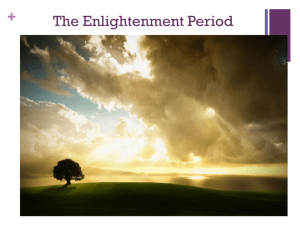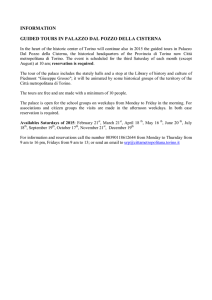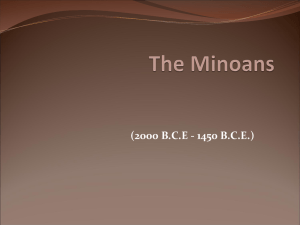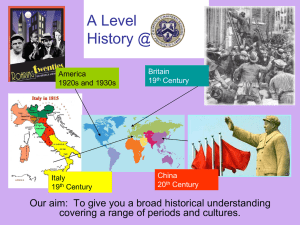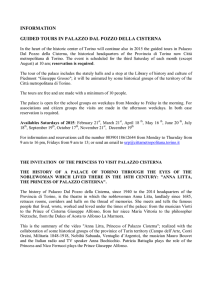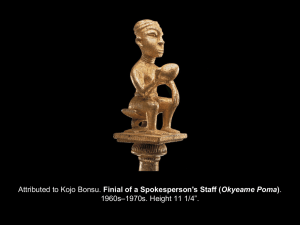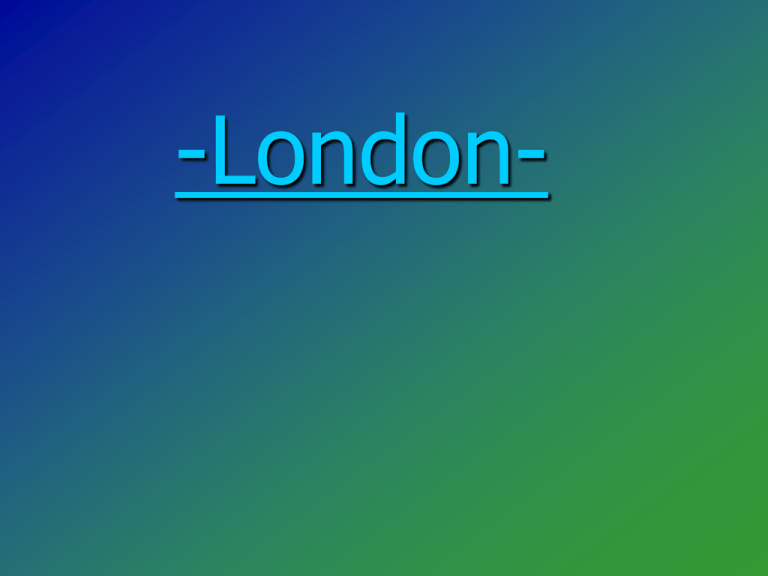
-London-
Community and people
There are over seven million people
living in London making it the biggest
city in Western Europe. Despite its
size, many Londoners are lonely and
isolated and for all its prosperity three
of the five most deprived boroughs in
England are in London.
This section looks at some people who
maybe socially excluded in London. It
also explores ways people who happen
to live in the same area can be
transformed into a community. Work is
being done by central government,
local government and voluntary
organisations to recognise everyone’s
value, regardless of their age, sex,
ethnicity or disability.
Many parts of London, such as Islington or Highgate, were
once villages (small towns). Today, London is a growing city
with a population of more than seven million. People have
come from all parts of the world to live here. They have
brought with them different ways of living and colourful
festivals. London is a multicultural city, as it has been since
the Roman times. Now about a quarter of the capital's
inhabitants are members of the ethnic minorities.
Natural environment
London has more parks and green
areas than any other city of its size
in the world. Almost 39 per cent of
London's total area is green. But
London's green environment isn't
just about parks and gardens - it
includes London's noise levels,
water, energy and air.
Our Green London guide telling
you all you need to know about
outdoor London - from parks and
waterways to wild London and city
farms. In our How to be green
section you’ll find information
about how you can do your bit for
the environment.
Big Ben
Big Ben is the nickname for the great bell of the clock at the
north end of the Palace of Westminster in London, and is
often extended to refer to the clock or the clock tower as
well. Big Ben is the largest four-faced chiming clock and the
third-tallest free-standing clock tower in the world. It
celebrated its 150th anniversary in May 2009 (the clock itself
first ticking on 31 May 1859), during which celebratory events
took place.
Officially, the Clock Tower's bell is
called the Great Bell though it is
better known by the name 'Big
Ben'.
There are two theories for this
name's origin. These are that the
Great Bell was:
named after Sir Benjamin Hall,
First Commissioner for Works
1855-1858, whose name is
inscribed on the bell
named after Ben Caunt, a
champion heavyweight boxer of
the 1850s
The first theory is thought to be
the most likely.
The name 'Big Ben' is often
associated with the Clock Tower
and the Great Clock as well as the
Great Bell. It was to the Great Bell
that the name originally was given.
Warners of Norton near Stockton-onTees cast the new bell in August 1856.
It was transported by rail and sea to
London. On arrival at the Port of
London, it was placed on a carriage
and pulled across Westminster Bridge
by 16 white horses.
The bell was hung in New Palace Yard.
It was tested each day until 17 October
1857 when a 1.2m crack appeared. Noone would accept the blame. Theories
included the composition of the bell's
metal or its dimensions. Warners
blamed Denison for insisting on
increasing the hammer's weight from
355kg to 660kg.
Warners asked too high a price to break
up and recast the bell so George Mears
at the
Whitechapel Foundry was appointed.
The second bell was cast on 10 April
1858.
This bell was 2.5 tonnes lighter than the first. Its dimensions meant it was
too large to fit up the Clock Tower's shaft vertically so Big Ben was turned on
its side and winched up. It took 30 hours to winch the bell to the belfry in
October 1858. The four quarter bells, which chime on the quarter hour, were
already in place.
Big Ben rang out on 11 July 1859 but its success was short-lived. In
September 1859, the new bell also cracked and Big Ben was silent for four
years. During this time, the hour was struck on the fourth quarter bell.
The total cost of making the clock and bells and installing them in the Clock
Tower reached £22,000.
The River Thames
The River Thames is the second
longest river in the United Kingdom
and the longest river entirely in
England, rising at Thames Head in
Gloucestershire, and flowing into the
North sea at the Thames Estuary. It
has a special significance in flowing
through London, the capital of the
United Kingdom, although London
only includes a short part of its course.
The river is tidal in London with a rise
and fall of 7 metres (23 ft) and
becomes non-tidal at Teddington Lock.
The catchment area covers a large part
of South Eastern and Western England
and the river is fed by over 20
tributaries. The river contains over 80
islands, and having both seawater and
freshwater stretches supports a variety
of wildlife.
The river has supported human activity
from its source to its mouth for thousands
of years providing habitation, water power,
food and drink. It has also acted as a major
highway both for international trade
through the Port of London, and internally
along its length and connecting to the
British canal system. The river’s strategic
position has seen it at the centre of many
events and fashions in British history,
earning it a description by John Burns as
“Liquid History”. It has been a physical and
political boundary over the centuries and
generated a range of river crossings. In
more recent time the river has become a
major leisure area supporting tourism and
pleasure outings as well as the sports of
rowing, sailing, skiffing, kayaking, and
punting. The river has had a special appeal
to writers, artists, musicians and filmmakers and is well represented in the arts. It
is still the subject of various debates about
its course, nomenclature and history.
The Thames passes by some of the sights of London, including the
Houses of Parliament and the London Eye.
The Thames has a length of 215 miles (346 km). Its usually quoted
source is at Thames head, about a mile north of the village of
Kemble and near the town of Cirencester, in the Cotswolds. This
makes it the longest river entirely in England, although the River
Severn, which is partly in Wales, is a longer river in the United
Kingdom. Seven Springs near Cheltenham, where the river Churn
rises, is also sometimes quoted as the Thames' source,as this location
is furthest from the mouth adding some 14 miles (22 km) to the
length. The springs at Seven Springs also flow throughout the year,
while those at Thames Head are only seasonal.
The Palace of Westminster
The Palace of Westminster, also
known as the Houses of Parliament
or Westminster Palace, is the seat of
the two houses of the Parliament of
the United Kingdom-the House of
Lords and the House of Commons.
The Palace lies on the north bank of
the River Thames in the heart of the
London borough of the City of
Westminster, close to the historic
Westminster Abbey and the
government buildings of Whitehall
and Downing Street. The name may
refer to either of two structures: the
Old Palace, a medieval building
complex most of which was destroyed
in 1834, and its replacement New
Palace that stands today; it has retained
the style and status of a royal
residence, despite its actual use.
The first royal palace was built on the site in the eleventh
century, and Westminster was the primary London
residence of the Kings of England until a fire destroyed
much of the complex in 1512. After that, it served as the
home of Parliament, which had been meeting there since
the thirteenth century, and the seat of the Royal Courts of
Justice, based in and around Westminster Hall. In 1834, an
even greater fire ravaged the heavily rebuilt Houses of
Parliament, and the only structures of significance to
survive were Westminster Hall, the Cloisters and Chapter
House of St Stephen's, the Chapel of St Mary Undercroft
and the Jewel Tower.
The Palace is one of the centres of
political life in the United
Kingdom; "Westminster" has
become a metonym for the UK
Parliament, and the Westminster
system of government has taken its
name after it. Its Clock Tower, in
particular, which has become
known as "Big Ben" after its main
bell, is an iconic landmark of
London and the United Kingdom
in general, one of the most popular
tourist attractions in the city and an
emblem of parliamentary
democracy. The Palace of
Westminster has been a Grade I
listed building since 1970 and part
of a UNESCO World Heritage Site
since 1987.
Buckingham Palace
Buckingham Palace in London,
England, is not only the official
residence of the Queen; over the
years this sprawling palace has
entertained countless heads of
State from around the world,
issued official statements during
times of war, and as of late has
become a major tourist attraction.
Until recently Buckingham Palace
was not available for public tours,
and the only guests allowed in the
palace were there by royal
invitation. The Buckingham Palace
of today, however, welcomes
travelers in for a Buckingham
Palace Tour 8 weeks out of the
year. Much of the rest of the year,
the royal family is in residence and
often conducting official palace
business.
The 20th century brought with it the reign of the current Queen, Elizabeth
II, who agreed to open much of the palace up to the public for
Buckingham Palace tours. A tour in Buckingham Palace will now take
guests through the State Room, the Grand Staircase, the Throne Room,
and the Picture Gallery that features many world-renowned works of art. A
Buckingham Palace Tour may only be booked during an 8-week period
spanning August and September each year, and tickets may be purchased in
advance, or at the palace ticket office on Buckingham Palace Road. Ticket
lines for a tour in Buckingham Palace tend to be quite long, so if you are
know which day you plan to visit in advance, it is a good idea to purchase
your tickets online or over the phone.
Another major Buckingham Palace
attraction with a firm place in
Buckingham Palace history is the
Changing of the Guard. Changing
of the Guard generally happens
once a day at 11:30am, all year
long. Tourists should note,
however, that due to weather and
various security precautions, the
changing of the guard is
sometimes cancelled at the last
minute. Also, though the changing
of the guard is often thought to be
mostly ceremonial, the guard does
in actuality serve and important
security role. Security in and
around the Palace is taken quite
seriously.
Whether you plan to take a tour in
Buckingham Palace for a
voyeuristic look at royal life
throughout the ages, or simply
marvel at its huge stature from
outside the palace walls, guests of
London will surely be impressed by
the magnificence of this historical
place.
The Garden
Described as a 'walled oasis in the
middle of London', the Palace's
garden is home to thirty different
species of bird and more than 350
different wild flowers, some
extremely rare. Visitors end their
tour with a walk along the south
side of the garden, with splendid
views of the west front of the
Palace and the famous lake.
The State Rooms
The State Rooms form the heart of
the working palace and are lavishly
furnished with some of the greatest
treasures from the Royal Collection
- paintings by Rembrandt, Rubens,
Poussin and Canaletto; sculpture by
Canova; exquisite examples of
Sèvres porcelain; and some of the
finest English and French furniture.
The End….

